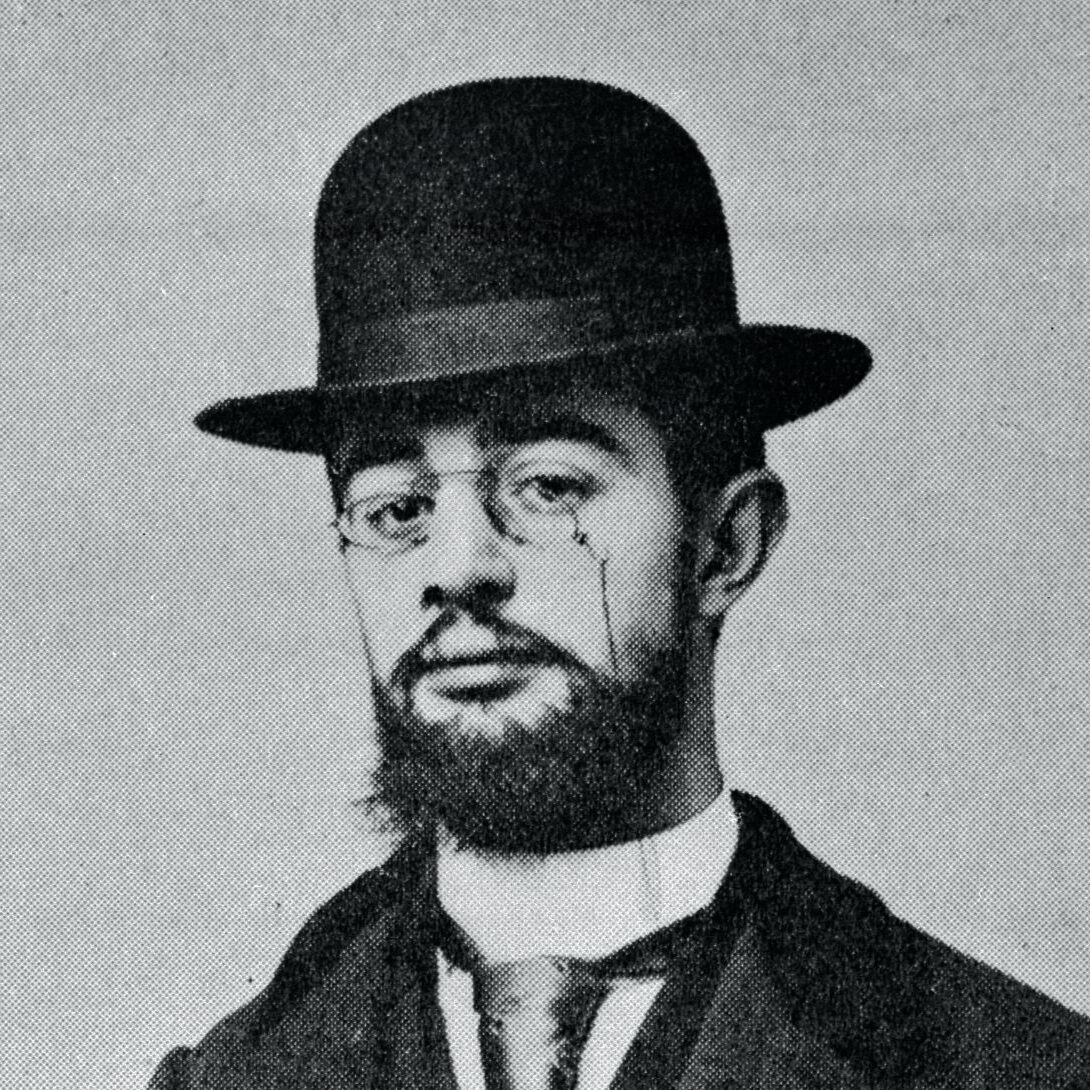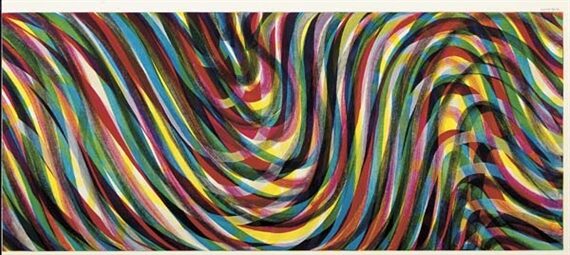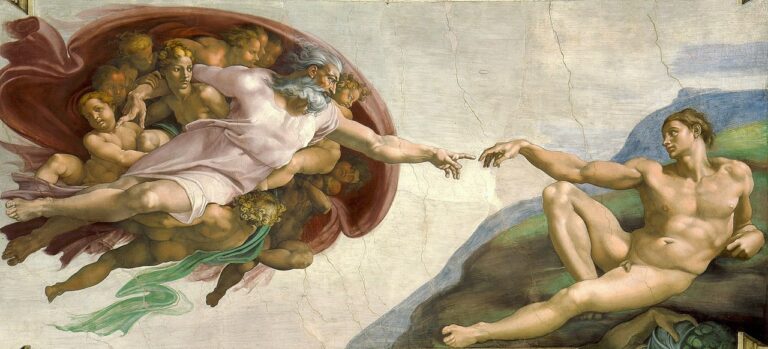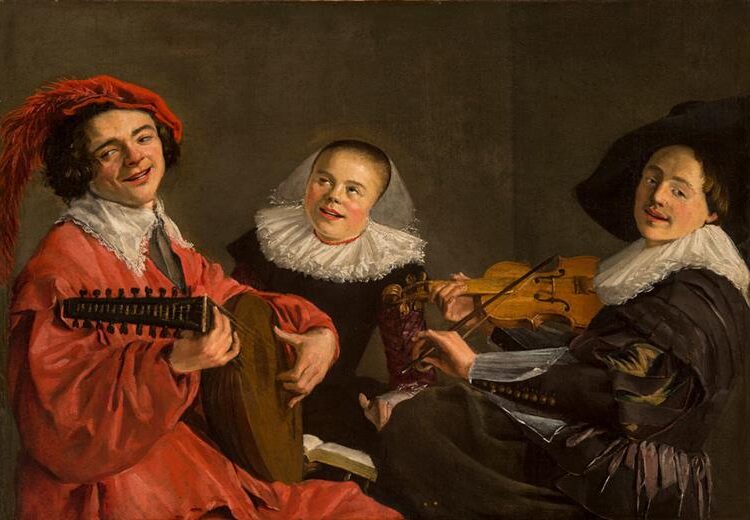Henri de Toulouse-Lautrec Painter: The Iconic Voice of Belle Époque Paris
Born: 24 November 1864, Albi, France
Death: 9 September 1901, Saint-André-du-Bois, France
Art Movement: Post-Impressionism, Art Nouveau
Nationality: French
Teacher: René Princeteau, Fernand Cormon, and Léon Bonnat
Henri de Toulouse-Lautrec Painter: The Iconic Voice of Belle Époque Paris
Early Life and Education
Henri de Toulouse-Lautrec’s journey from aristocratic beginnings to becoming one of the most influential Post-Impressionist artists was shaped by personal challenges and artistic opportunities. His unique perspective on Parisian life emerged from his distinctive background and formative experiences.
Birth and Family Background
Henri Marie Raymond de Toulouse-Lautrec-Monfa was born on November 24, 1864, in Albi, France, to an aristocratic family. His father, Count Alphonse, and mother, Countess Adèle, were first cousins—a practice common among nobility at the time.
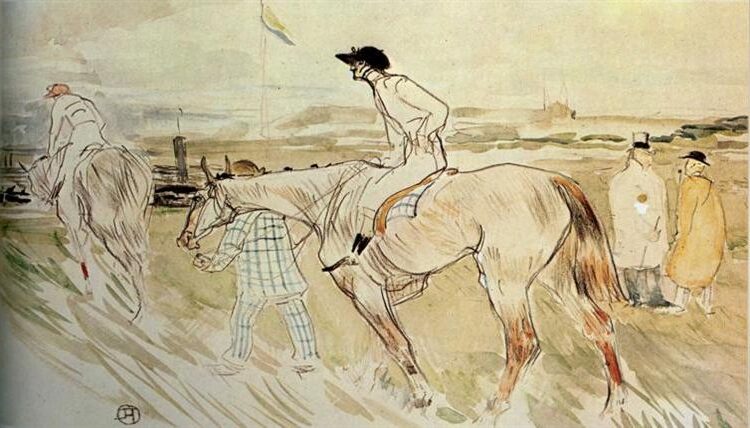
Is it Enough to Want Something Passionately (The Good Jockey), 1895
The Toulouse-Lautrec family was one of France’s oldest noble families, tracing their lineage back to the time of Charlemagne. Their aristocratic status provided Henri with privilege and financial security throughout his life.
Henri spent his childhood between family estates in Albi and the Château du Bosc. His early years were filled with hunting, riding, and country pursuits typical of French nobility.
Health Challenges and Physical Stature
At age 13, Henri broke his left femur, and at 14, fractured his right leg. These injuries failed to heal properly due to a genetic condition that affected bone development.
Medical experts now believe Toulouse-Lautrec suffered from pycnodysostosis, a rare genetic disorder that causes fragile bones and stunted growth. This condition was later nicknamed “Toulouse-Lautrec Syndrome.”
While his torso developed normally, his legs stopped growing, resulting in an adult height of only 4’8″ (1.42m). These physical challenges prevented Henri from participating in many activities expected of aristocratic men.
His physical differences led to isolation and ridicule, pushing him toward art as both escape and expression. This outsider perspective later influenced his compassionate portrayal of marginalized people.
Artistic Beginnings and Notable Influencers
Henri showed artistic talent from an early age. During periods of convalescence after his injuries, he immersed himself in sketching and painting to pass time.
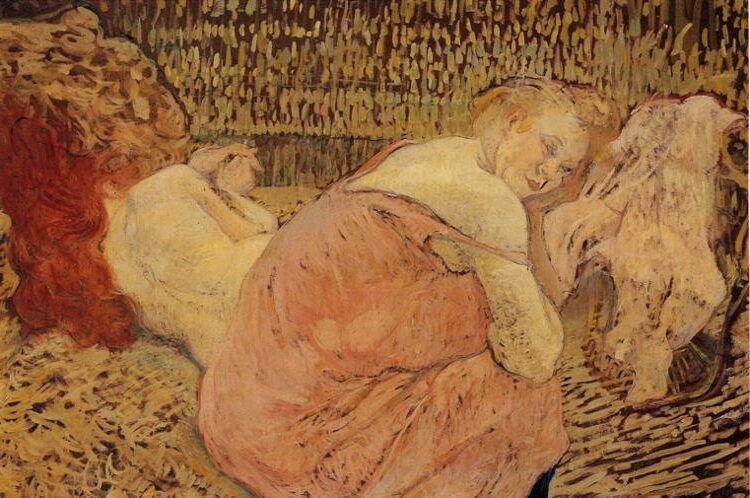
Two Friends, c. 1894–1895 by Henri de Toulouse-Lautrec
His first formal art training came from René Princeteau, a family friend and deaf painter known for equestrian subjects. Princeteau recognized Henri’s talent and encouraged his artistic development.
Key Early Influences:
- René Princeteau: Taught technical fundamentals
- Jean-Louis Forain: Introduced urban subject matter
- Edgar Degas: Influenced composition and use of line
Henri’s mother fully supported his artistic interests, recognizing that traditional aristocratic careers would be difficult given his physical limitations. She arranged for his early training and later moved to Paris to support his education.
Formal Art Education and Move to Paris
In 1882, Toulouse-Lautrec moved to Paris to study under academic painters Léon Bonnat and later Fernand Cormon. In their ateliers, he mastered traditional techniques while developing his distinctive style.
At Cormon’s studio, he met fellow students who would become important artists:
- Émile Bernard
- Vincent van Gogh
- Louis Anquetin
Henri quickly rejected traditional academic approaches. Instead, he was drawn to depicting everyday Parisian life in Montmartre, especially its entertainment venues and nightlife.
By 1884, he had established his own studio in Montmartre, immersing himself in the bohemian culture that would define his artistic subject matter. His move away from family estates to independent living in Paris marked his transition to professional artistry.
Artistic Style and Methods

The Kiss, 1892–1893 by Henri de Toulouse-Lautrec
Toulouse-Lautrec developed a distinctive artistic approach that combined vibrant colors with expressive line work. His techniques reflected both traditional influences and emerging modern styles, making him a pivotal figure in the transition from Impressionism to the avant-garde movements of the 20th century.
Influence of Impressionism and Japanese Prints
Toulouse-Lautrec’s style was significantly shaped by Impressionist techniques and Japanese ukiyo-e prints. From Impressionism, he adopted the focus on capturing moments of modern life and the use of visible brushstrokes. However, he moved beyond these elements to create his own unique style.
Japanese prints influenced his use of flat color areas, asymmetrical compositions, and cropped figures. This can be seen in works like “At the Moulin Rouge” where he employed unusual viewing angles and abrupt figure cropping reminiscent of Japanese woodblock prints.
Unlike the Impressionists’ focus on natural light, Toulouse-Lautrec preferred artificial lighting of Paris nightlife. He studied under academic painter Léon Bonnat but rejected traditional academic styles in favor of a more direct, honest representation of his subjects.
Development of Post-Impressionism
Toulouse-Lautrec helped pioneer Post-Impressionism through his emphasis on emotional content and stylized forms. Unlike pure Impressionists, he focused on line quality and psychological depth rather than just visual effects of light.
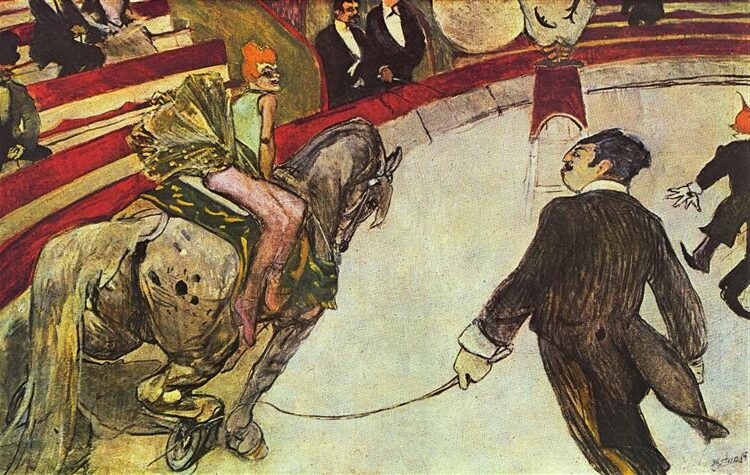
At the Circus Fernando, The Rider (Au cirque Fernando, l’écuyère), 1888
His paintings featured bold outlines and simplified forms that emphasized character over realistic detail. This approach aligned him with other Post-Impressionist artists like Van Gogh and Gauguin, though his subject matter remained distinctly urban.
Toulouse-Lautrec’s brushwork varied from thin washes to thick impasto, depending on his artistic intention. He often used cardboard or wood panels rather than canvas, applying oil paint thinned with turpentine to create quick, spontaneous effects.
His compositions frequently incorporated empty space and unusual perspectives to create visual tension. This innovative approach influenced later movements including Expressionism and Fauvism.
Use of Color and Characterization
Toulouse-Lautrec’s color palette was bold and expressive, often using contrasting colors to create visual impact. He frequently employed vibrant reds, yellows, and greens against darker backgrounds to highlight his subjects.
His masterful use of color served both aesthetic and psychological purposes. In works depicting Montmartre performers, he used color to convey mood and character, often exaggerating certain features to reveal inner personalities.
Rather than flattering his subjects, Toulouse-Lautrec painted them with unflinching honesty. He captured the weariness of dancers, the exaggerated makeup of performers, and the complex humanity of prostitutes with empathy rather than judgment.
His swift, confident brushstrokes communicated movement and energy. This technique was particularly effective in capturing dancers and cabaret performers in action, giving viewers a sense of the vibrant nightlife he documented.
Lithography and Contribution to Poster Art
Toulouse-Lautrec revolutionized lithography and poster design in the 1890s. He created approximately 350 lithographs and posters, elevating commercial advertising to fine art through innovative techniques and bold designs.

Little Dog, 1888 by Henri de Toulouse-Lautrec
His posters for the Moulin Rouge and other venues featured simplified forms, dramatic silhouettes, and limited color palettes that made them instantly recognizable from a distance. He often used just four or five colors, applied in flat areas with dramatic black outlines.
Toulouse-Lautrec pioneered the spattered ink technique called “crachis,” which created textured effects impossible to achieve with traditional lithography methods. He also experimented with multiple stones to achieve complex color combinations.
His poster designs influenced modern graphic art and advertising. Works like “La Goulue at the Moulin Rouge” (1891) demonstrated how commercial art could incorporate artistic innovation while effectively communicating its message.
Major Works and Legacy
Toulouse-Lautrec created nearly 737 canvases, 275 watercolors, 363 prints and posters, and over 5,000 drawings during his short lifetime. His distinctive style captured the colorful, sometimes seedy nightlife of Paris in the late 19th century with honesty and humanity.
Notable Paintings and Series
Toulouse-Lautrec’s most celebrated works include “At the Moulin Rouge” (1895), which depicts the famous cabaret with himself in the background. His portrait “La Goulue Arriving at the Moulin Rouge” (1892) immortalized the famous cancan dancer who rose to stardom in Montmartre.


The “Salon at the Rue des Moulins” (1894) offers a candid glimpse into brothel life, portrayed with dignity rather than judgment. His series of lithographs “Elles” (1896) similarly documented the private lives of prostitutes with unprecedented empathy.
His poster “Moulin Rouge: La Goulue” (1891) revolutionized advertising art with its bold colors and simplified forms. This iconic work merged fine art with commercial design, establishing Lautrec’s reputation beyond traditional painting circles.
Depictions of Montmartre and Parisian Nightlife
Toulouse-Lautrec chronicled Montmartre’s vibrant entertainment scene with unmatched authenticity. He frequented establishments like the Moulin Rouge, Chat Noir, and Folies Bergère, capturing performers in their natural environment.
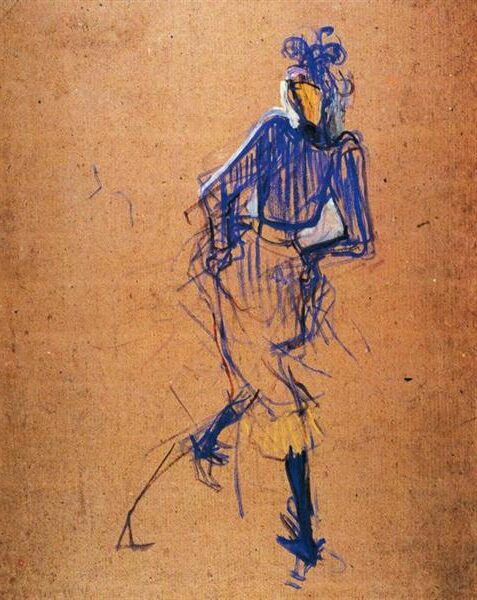
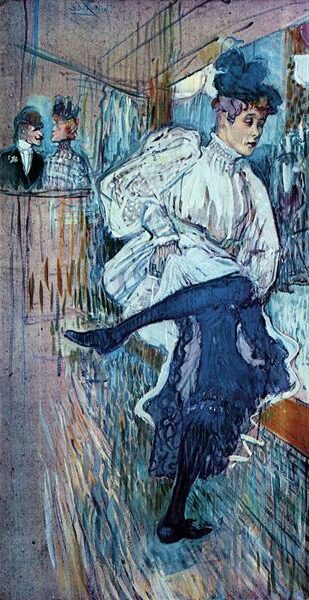
His paintings of singers like Yvette Guilbert and Jane Avril preserved these performers’ legacies. In “Jane Avril Dancing” (1892), he captured the dancer’s unique style and nervous energy that set her apart from other performers.
The artist documented cabaret culture with an insider’s perspective. Unlike other bourgeois artists who merely visited these venues, Toulouse-Lautrec immersed himself in this world, earning the trust of performers and workers alike.
His nightlife scenes balanced artistic innovation with documentary value. These works serve as historical records of a fleeting cultural moment in Paris while transcending mere documentation through their artistic brilliance.
Impact on Art Movements and Modern Culture
Toulouse-Lautrec bridged Post-Impressionism and Art Nouveau with his distinctive style. His flat color areas, bold outlines, and cropped compositions influenced the development of modern graphic design.
His poster work transformed advertising into an art form. The simplified shapes and dynamic compositions he pioneered can be seen in everything from mid-century travel posters to contemporary logo design.
Filmmakers like Baz Luhrmann drew inspiration from Toulouse-Lautrec’s vision of Montmartre. The movie “Moulin Rouge!” (2001) paid homage to his aesthetic, introducing his work to new generations.
Modern illustrators and cartoonists continue to reference his ability to capture personality with minimal lines. His influence extends to fashion photography, where his compositions and approach to capturing movement remain relevant.
Preservation and Museums
The largest collection of Toulouse-Lautrec’s works resides in Albi, France, his birthplace. The Toulouse-Lautrec Museum houses over 1,000 pieces, including rare sketches and personal artifacts.
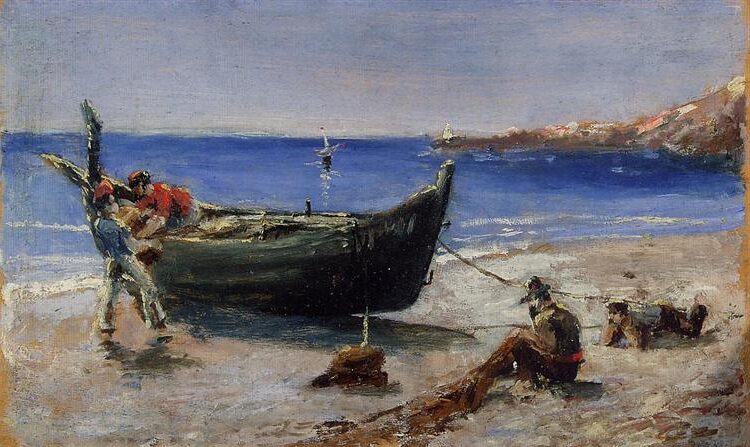
Fishing Boat, 1880 by Henri de Toulouse-Lautrec
The Art Institute of Chicago maintains an extensive collection of his posters and lithographs. Their preservation efforts have maintained the vibrant colors that might otherwise have faded over time.
Major retrospectives continue to tour globally. A 2019 exhibition at the Grand Palais in Paris drew record crowds, demonstrating his enduring appeal more than a century after his death.
Digital preservation projects have made his complete works accessible online. High-resolution scans allow scholars and art lovers to study details of his technique that weren’t previously visible to the general public.
Frequently Asked Questions
Henri de Toulouse-Lautrec generated considerable interest among art enthusiasts for his distinctive style and captivating life story. His works, techniques, influences, and personal challenges have shaped his unique contribution to art history.
What are the most notable works of Henri de Toulouse-Lautrec?
“At the Moulin Rouge” (1892-95) stands as one of Toulouse-Lautrec’s most recognized paintings, capturing the vibrant atmosphere of the famous Parisian nightclub. The work features his signature style with its bright colors and careful attention to the patrons’ expressions.
His poster “Moulin Rouge: La Goulue” (1891) revolutionized advertising art and remains an iconic image of the Belle Époque. This lithograph showcases his ability to combine bold silhouettes with dynamic composition.
“The Salon in the Rue des Moulins” (1894) offers a candid glimpse into Parisian brothel life, depicted with sensitivity rather than judgment. His “Divan Japonais” poster (1893) and “Jane Avril at the Jardin de Paris” (1893) further demonstrate his mastery of promotional art.
How did Henri de Toulouse-Lautrec’s physical condition influence his art?
Toulouse-Lautrec’s physical challenges profoundly shaped his artistic perspective. His growth was stunted after childhood accidents and a genetic disorder that left him with an adult height of only 4’8″ (1.42m).
This physical difference positioned him as an outsider in society, allowing him to observe human behavior with unique insight. His condition drew him to other marginalized individuals including cabaret performers, prostitutes, and entertainment figures.
His physical limitations also influenced his technical approach, as he adapted his painting style to accommodate his mobility constraints. The empathy evident in his portraits stems partly from his firsthand understanding of living outside conventional social boundaries.
Can you describe the role of Parisian nightlife in Toulouse-Lautrec’s paintings?
Parisian nightlife became Toulouse-Lautrec’s primary subject matter and artistic laboratory. He frequented establishments like the Moulin Rouge, Chat Noir, and various theaters in Montmartre, immersing himself in their vibrant atmospheres.
His paintings captured performers in authentic moments rather than staged poses. He depicted dancers like La Goulue and Jane Avril with a truthfulness that balanced glamour with the harsher realities of their profession.
The artificial lighting of nightclubs influenced his color palette, with its dramatic contrasts and distinctive tones. His work documented a specific cultural moment in Parisian history, preserving the energy and character of Montmartre’s entertainment district during the 1890s.
How did Henri de Toulouse-Lautrec contribute to the development of Post-Impressionism?
Toulouse-Lautrec bridged Impressionism and the emerging modern art movements with his distinctive approach. He moved beyond Impressionism’s focus on light effects to emphasize psychological depth and social commentary.
His flattened perspectives and strong outlines showed Japanese woodblock print influences, helping introduce these elements into Western art. His willingness to depict urban life’s less glamorous aspects expanded the acceptable subject matter for “serious” art.
Toulouse-Lautrec’s commercial poster work elevated advertising to an art form, blurring distinctions between fine and commercial art. His emotional honesty and artistic innovations influenced later artists including Picasso and Matisse.
What techniques and mediums did Toulouse-Lautrec employ in his artistic process?
Toulouse-Lautrec mastered lithography. He transformed the commercial medium into a sophisticated art form.
He often mixed oil paints with turpentine to create thin, flowing applications. He did this on cardboard rather than canvas.
His technique of “peinture à l’essence” (painting with essence) allowed him to work quickly and capture fleeting moments. He employed bold outlines and flat color areas. These were influenced by Japanese prints and photography’s cropped compositions.
In his posters, he pioneered the use of overlapping transparent colors. This created new hues through layering.
His brushwork ranged from detailed precision to economical strokes. The latter suggested rather than depicted his subjects.
Who were the contemporaries and influences in Toulouse-Lautrec’s artistic career?
Edgar Degas significantly influenced Toulouse-Lautrec’s approach to figure composition and subject matter. Both artists shared an interest in depicting dancers and the entertainment world with unflinching realism.
Japanese ukiyo-e prints by masters like Hokusai and Utamaro inspired his flattened perspectives and bold outlines. His work aligned with contemporaries like Vincent van Gogh, with whom he exhibited and shared a friendship.
Toulouse-Lautrec’s early training under academic painters Léon Bonnat and Fernand Cormon provided technical foundations he later transformed. His connections with other Post-Impressionists including Émile Bernard and Louis Anquetin fostered an environment of artistic exchange and innovation.


